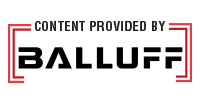
Customized sensors, embedded vision and RFID systems are often requirements for Life Science devices to meet the needs for special detection functions, size constraints and environmental conditions. Customization can dramatically raise costs and you don’t want to pay for stock features, such as an external housings and universal outputs, that are simply not needed. So, it comes down to your specification driving the design. A qualified sensor supplier can create custom orders, allowing your specifications to drive the design, building just what you need and nothing you don’t.
It’s as easy as putting a model together.
The process is fairly straight forward. After reviewing your specifications, the sensor supplier develops a plan to supply a functional prototype for your testing phase. Qualified sensing companies can quickly build prototypes either by starting with a standard product or using standard modules. Both methods have advantages.
Standard Product approach: This is the fastest method to get a prototype up and running. Here, the focus is on providing a solution for the basic sensing/detection application. Once testing confirms the functionally, a custom project is started. The custom project ensures seamless integration into your device. Also, cost control measures can be addressed.
Standard Module approach: This will handle the most demanding applications. When a standard product is not able to meet the basic required functionally, we turn to the base component modules. An ever-growing field of applications are solved by combining options from the hundreds of available modules. While this takes more time, the sensing company can deliver a near final prototype in much less time than if they were creating an internal development.
Qualified sensor companies can easily handle the production side as well. With significant investments in specialized automated manufacturing equipment, production can be scaled to meet varying demands. And as components go obsolete, sustaining engineering projects are routinely handled to maintain availability. This can be disruptive for internal production or contract manufacturers. Sensor companies will take on the responsibility of life-cycle management for years to come. It’s part of their business model.
So, make sure your sensor, embedded vision or RFID supplier has a large model kit to pull from. Your projects will exceed your specification and be completed on time without long-term life-cycle issues.
For more information , visit https://www.balluff.com/en/de/service/services/productbased-service/.
